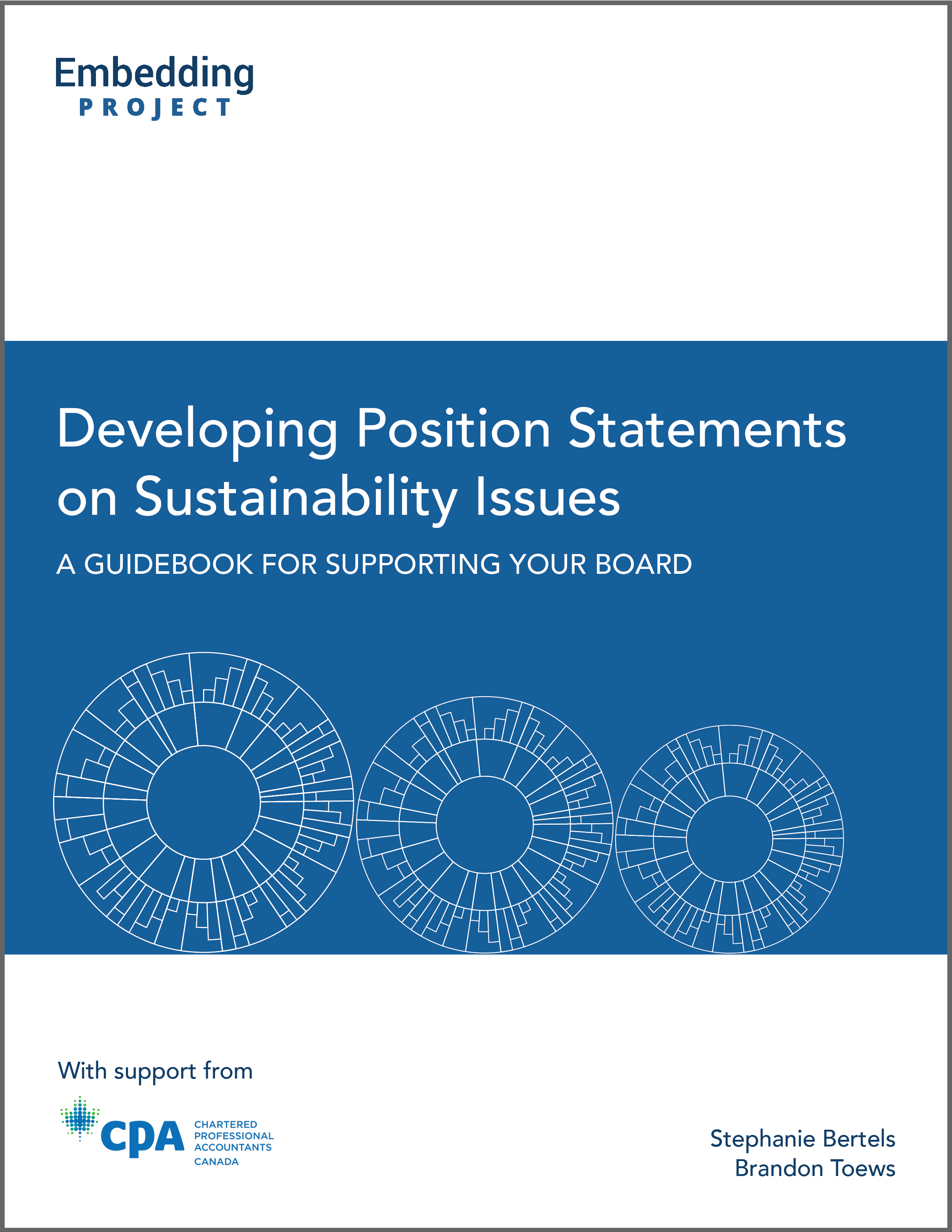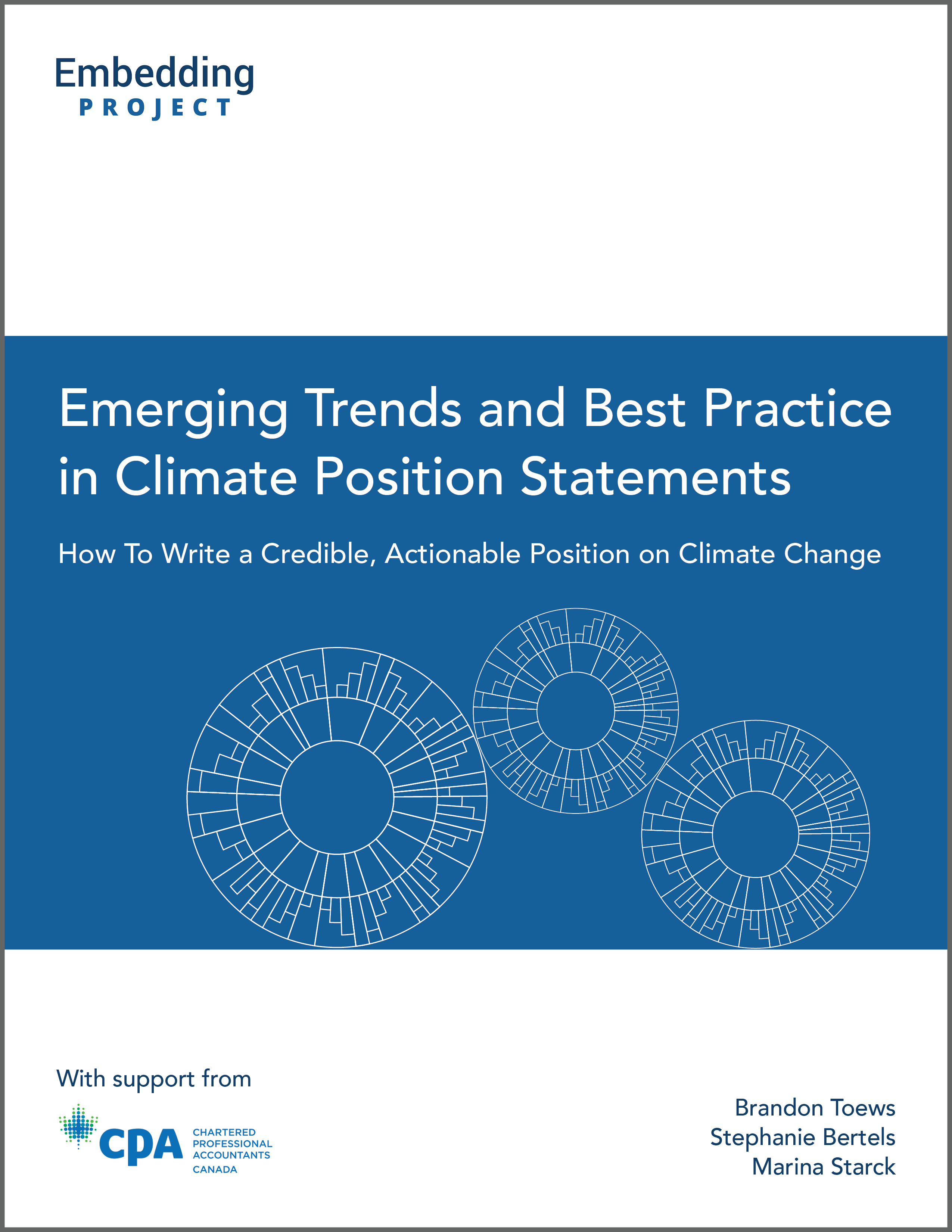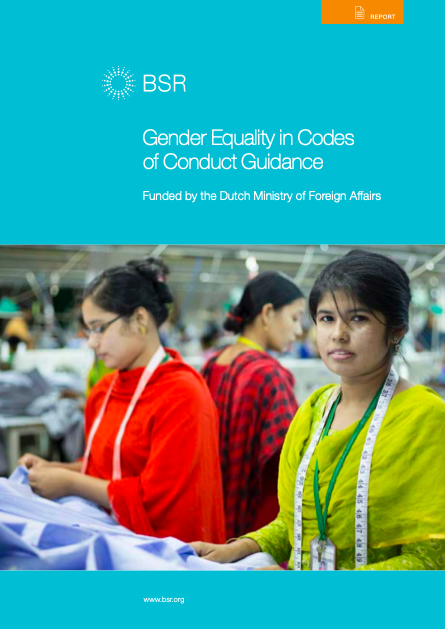Create Policies
Description
These resources will help you develop and put into use policies, positions, procedures, codes of conduct, and management standards that embed sustainability within your company's core strategy.
Share this Practice on:LinkedIn
Resources
Developing Position Statements on Sustainability Issues
There is growing pressure among companies to link social and environmental limits to corporate strategy and goal-setting. However, the result is often a lengthy document that fails to make strategic connections between specific issues and their implications on business decision-making. We developed this guidebook to help you articulate a concise and transparent board level position on key environmental, social, and governance issues. Drawing upon in-depth analyses of over 4,000 board position statements; over 200 interviews with CEOs, directors, and board chairs; and concepts outlined in our series on the Road to Context, this guidebook provides a checklist for crafting a contextual board position statement and includes examples from a range of industries and global settings.
Emerging Trends and Best Practice in Climate Position Statements
Climate change is happening, and the impacts are intensifying. Companies are expected to take a position on climate change and outline an appropriate response. The Embedding Project’s climate position guide helps companies to articulate a concise and transparent board level position on climate change. Drawing on in-depth analyses of over 2,600 climate position statements, this guidebook provides a checklist for crafting a climate position statement with concrete examples from a range of industries and global settings.
Taking a Credible Position on Nature
There is growing pressure on companies to publicly acknowledge the unprecedented nature loss we face, and what they plan to do to address it. To help them do so, we reviewed over 1,000 statements on nature loss, biodiversity, and ecosystem stewardship from a wide range of geographies and industries, and identified examples of how companies are explaining the issue of nature loss, linking the issue of nature loss to their strategy, and clarifying their commitments to protect and restore nature. We hope this guide is helpful to you in articulating your own credible position statement on protecting and restoring nature.
Position Database
Is your company interested in taking a public position on an ESG issue?
To help companies develop strong, clear positions, we will maintain a public database containing leading positions articulated by large companies globally.
Our governance guide outlines how companies should articulate their positions, and we have applied this criteria to the positions featured in this database.
Standards Map
This comprehensive database from the International Trade Centre (ITC) provides free, accessible, verified, and transparent information on over 300 standards related to a wide range of sustainability topics, including worker rights, environmental protection, and business ethics. ITC also provides a Standards Map toolkit, which will help you to find information about voluntary sustainability standards, codes of conduct, audit protocols, reporting frameworks, and company programs on sustainability.
The ISO 14000 Family
This series of environmental management standards provide guidance for organisations that want to make voluntary efforts to systematise and improve their environmental management. These standards can help you to create and implement policies and frameworks related to environmental system requirements, audits, life cycle analysis, and other challenges.
A Guide for Business: How to Develop a Human Rights Policy
Developing a human rights policy is an important step on the journey to advancing human rights, both in the workplace and in the communities around your business. This guide from the UN Global Compact explains why you should develop a human rights policy; the process behind development; the key considerations and components; and steps for implementation.
Gender Equality in Codes of Conduct Guidance
This guide from BSR provides a framework for the implementation of good working conditions, and in particular for women. It explores the topic of mainstreaming gender equality, and especially within codes of conduct, and introduces nine principles that will help you to integrate gender equality considerations into the standards you use both internally and within your supply chain. Each principle features a summary, case studies, and recommended revisions and opportunities for leadership.
Guide to writing a code of conduct
This concise primer from Project Include explains the purpose of a code of conduct, identifies the parties most appropriate for drafting it, and lists the must-have content. It also features some helpful examples of holistic codes of conduct.
Guide to Writing an OHS Policy Statement
This resource from the Canadian Center for Occupational Health and Safety will help you to create an effective health and safety policy statement. It explains the types of issues that your policy should cover, key considerations, and includes an example of a policy checklist for reviewing new and existing OHS policies. The checklist is a good starting point for an OHS policy draft. It provides key prompting questions and includes essential topics and issues that need to be addressed. It also includes tools that will help you to introduce the policy, ensure that its objectives are clearly communicated and well-received, and create specific safety-related roles within the workplace. Although this resource was created for the Canadian context, the content is appropriate for any geographic or industrial context.
Why compliance programs fail - and how to fix them
Despite a broad and growing array of efforts to ensure adherence to policies, regulations, and laws, malfeasance remains a significant issue across the industrial spectrum. This article explains how companies too often fail to assess the effectiveness of their compliance programs, such as through incomplete or invalid metrics. It will help you to better understand how to develop and implement compliance policies that meet your legal and ethical obligations and enable you to advance towards context-based sustainability policies.
Share this Practice on:LinkedIn









